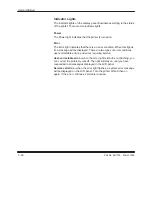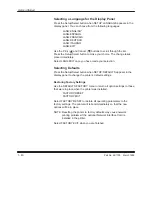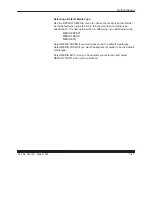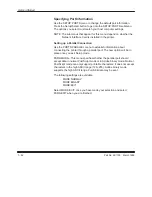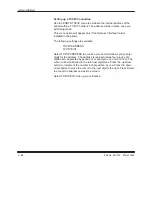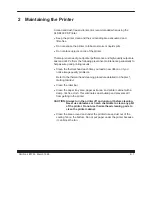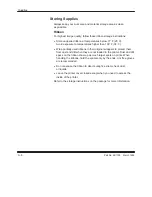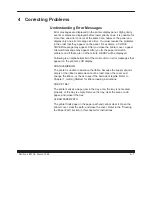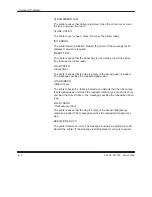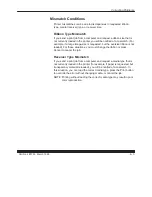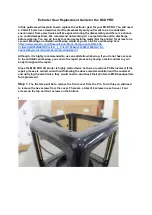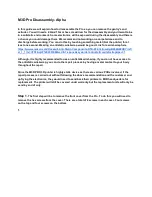
Getting Started
1–50
Part No. 4B1709
March 1995
Storing Prints and Transparencies
The image stability of thermal prints depends on factors such as
temperature; relative humidity; and exposure to light, biological, or
chemical contaminates. Thermal prints and transparencies should be
stored in a cool, dry environment that is free of chemical contamination.
D
The lower the temperature the better. Avoid temperatures higher than
72
_
F (25
_
C) for extended periods.
D
A relative humidity between 30% and 50% is ideal.
D
Avoid exposure to high-intensity light sources, particularly florescent
light and sunlight which are rich in ultraviolet radiation.
D
Avoid exposure to vinyl items (those made of polyvinyl chloride [PVC])
or any plastic which contains plasticizer. These items usually have a
distinctive “plastic” odor. If you use transparency sleeves, make sure
that they are not PVC-based.
D
Handle prints as little as possible. When handling prints, make sure
your hands are clean and free of food, oil, and grease. Wear clean
gloves when possible, and hold prints by the edges.
Your thermal images will last for a long time if you handle and store them
as described above.
Summary of Contents for XLS 8400 PS
Page 1: ...Part No 4B1709 User s Guide KODAK XLS 8400 PS Printer...
Page 2: ......
Page 6: ......
Page 14: ......
Page 66: ......

